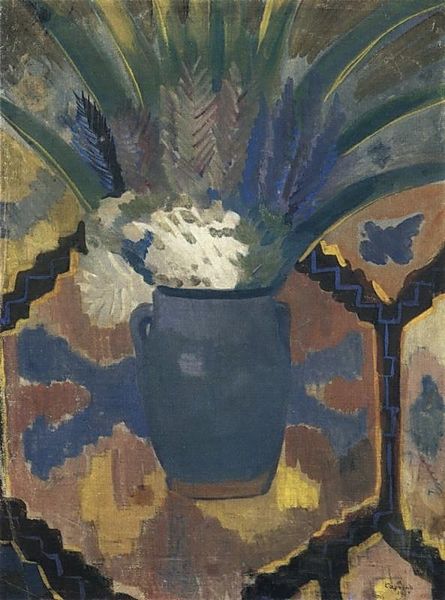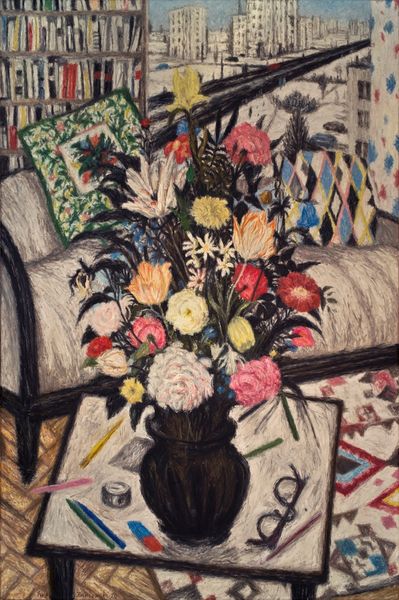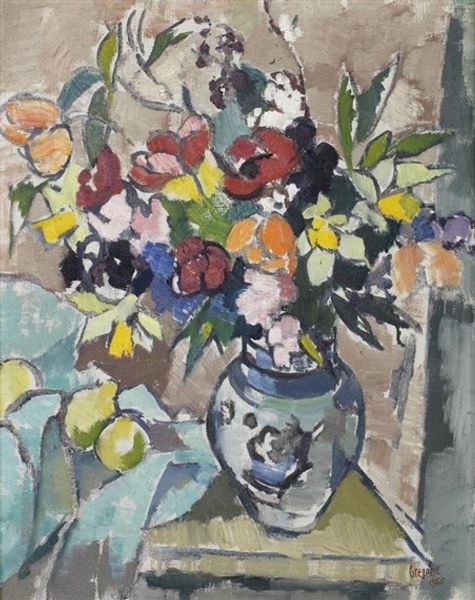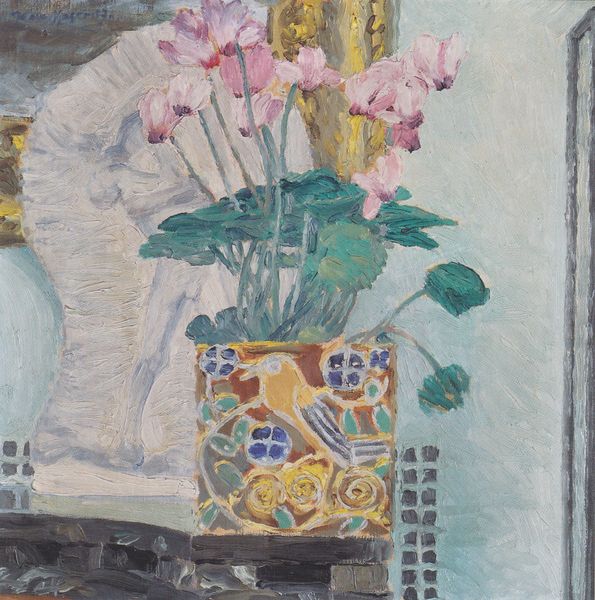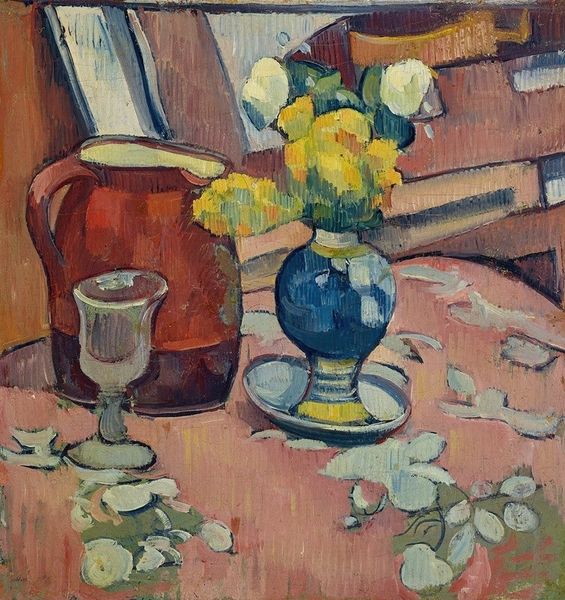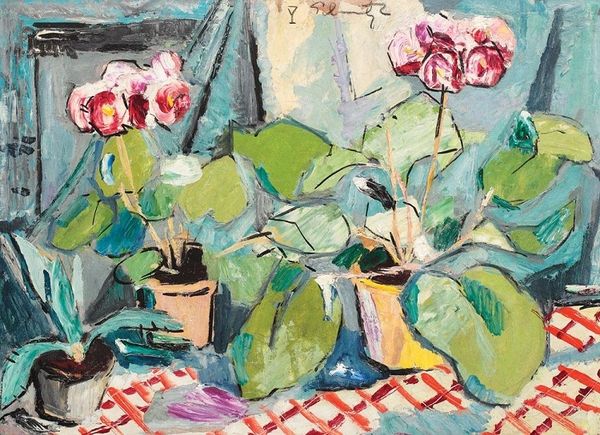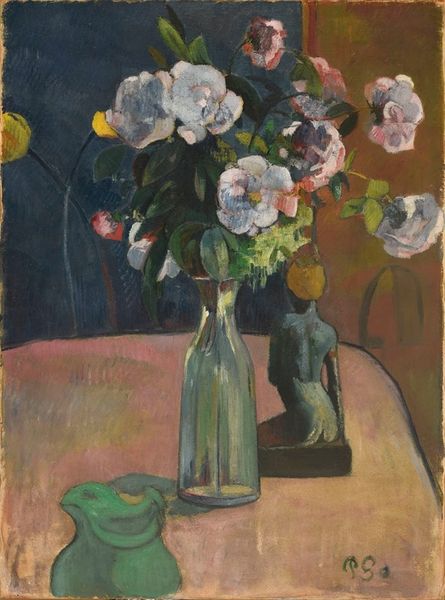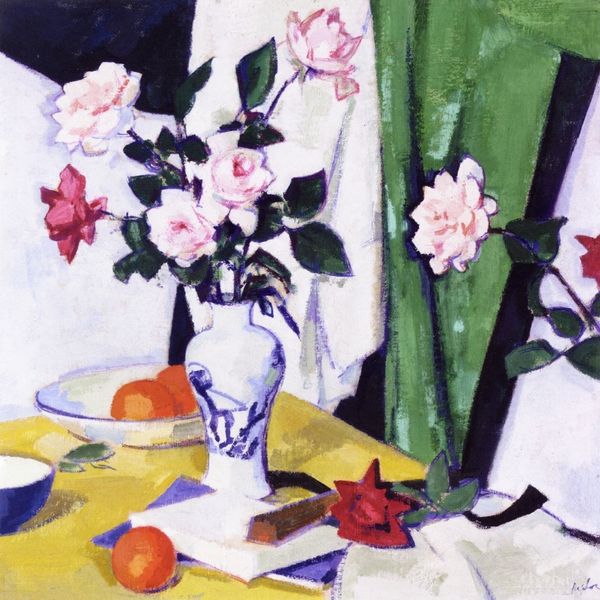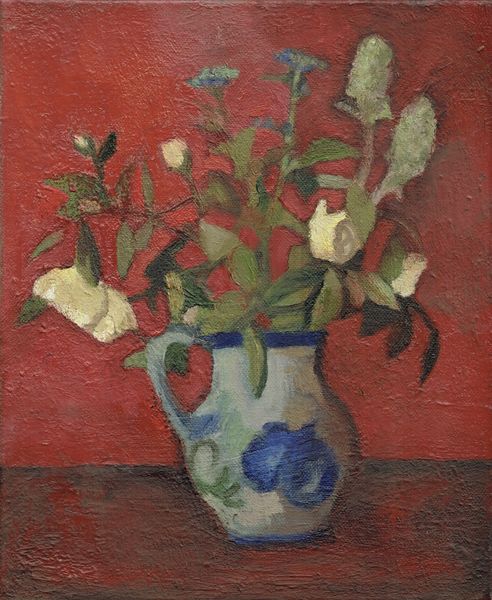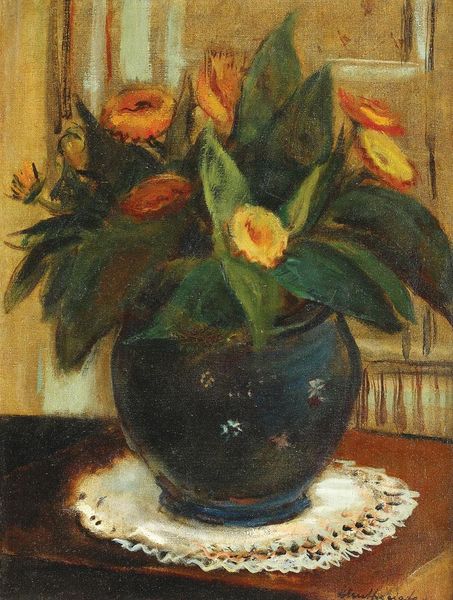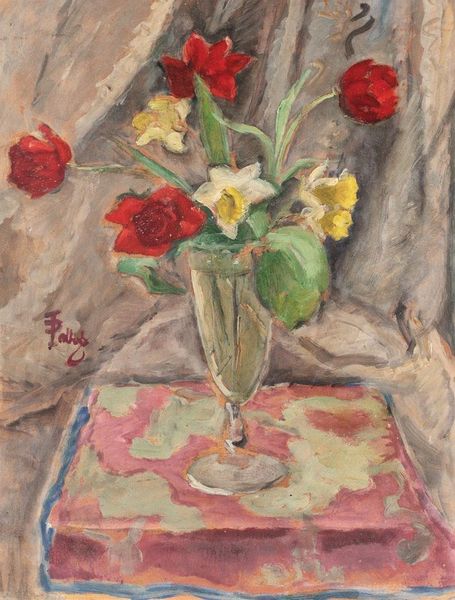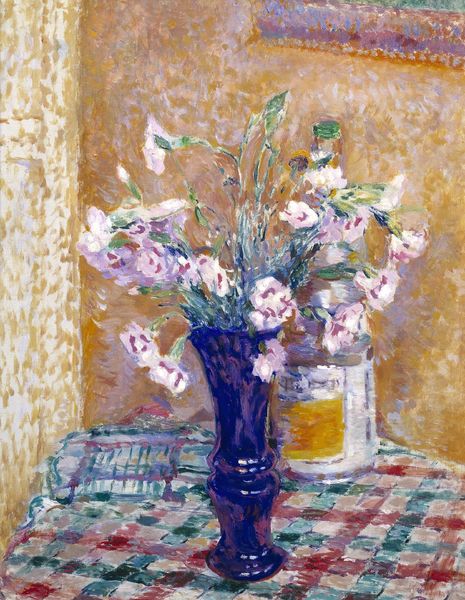
Copyright: Theodor Pallady,Fair Use
Curator: This composition feels remarkably intimate, almost a peek into a sunlit room filled with vibrant textures and surfaces. Editor: It's a still life, true, but not static. There's this… buzzing energy. The stripes are like little sonic waves, and that wallpaper—it feels alive, whispering stories of summer afternoons. What do you make of it, formally? Curator: Theodor Pallady's "Still Life with May Lilies", painted in 1935 using oil paint, showcases an interesting use of contrasting planes. The striped tablecloth clashes wonderfully with the patterned background. The lilies provide a soothing counterpoint, don’t you think? Editor: Soothing? Maybe. I feel a tension here, a slight discord. Like when you wear mismatched socks but pretend it's intentional. Those dark, metallic bowls next to the delicate flowers...they ground the composition. I love how Pallady plays with light, though. The way the sunlight catches the curve of that glass vase, illuminating the petals—pure romance. Curator: Yes, Pallady certainly captures a transient, delicate beauty. Structurally, note how he avoids perfect symmetry, favoring instead an organic arrangement that allows the eye to wander and linger. It's an intriguing interplay between order and randomness. I mean the wallpaper is so vivid it seems as much subject as ground. Editor: Agreed. The entire piece is like a memory—fragments of a perfect moment, filtered through a dream. It speaks to the everyday sublime, how even in the simplest things—a bowl, a vase of flowers—we can find magic. Does the flower even need to be identified, by the way? May lilies feel too precise somehow for this free, loosey-goosey feeling. Curator: Precision in art informs perception. In this artwork, the May lilies act as central thematic subject. The use of tonal values in painting those lilies really defines Pallady's mastery. Editor: He found it in everyday life, those tiny joys and fleeting beauty that we sometimes miss. It makes you want to pause, to notice, to really *see* the world around you. Curator: Precisely. Art as an invitation to attentive observation. Editor: Which is another way of saying slow down and smell the lilies, eh?
Comments
No comments
Be the first to comment and join the conversation on the ultimate creative platform.
